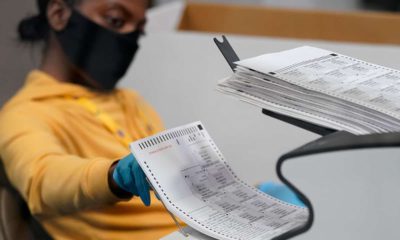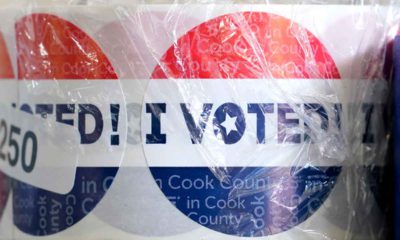Published
5 years agoon
By
AP News
SACRAMENTO — Millions of Californians have little or no choice when it comes to choosing a state legislator.
In 24 of the 100 districts on the ballot, only candidates from one party are running. And in 15 of those districts, the incumbent lawmaker is unopposed and all but assured of re-election.
In most of these districts the only party on the ballot is Democratic as the struggling Republican Party failed to even field a candidate. That leaves nearly 14½ million of California’s roughly 40 million people with no choice between major political parties in picking their state representative.
[rlic_related_post_one]
Two Republicans and 13 Democrats are unopposed including Senate leader Toni Atkins of San Diego and the head of the powerful Appropriations Committee, Sen. Anthony Portantino of La Cañada Flintridge.
“Incumbency is incredibly powerful,” Romero said, making it difficult for would-be opponents who lack the name recognition, financial backing, staff or campaign experience to realistically compete.
Although legislative district lines were drawn by a bipartisan citizens’ commission, many districts are inevitably dominated by voters favoring one of the two major parties. The Republican Party has been in decline for years and now is so marginalized in California that Democrats hold every statewide office and super-majorities in both legislative chambers.
Two years ago was even worse for Republicans. They failed to field candidates in 28 districts, six more than this year, said Rob Pyers, research director at the nonpartisan California Target Book that tracks legislative races and compiled comparison numbers for The Associated Press. Democrats had candidates in every 2018 race, but missed two Assembly seats this year.
“The reality of the situation is these are tough, tough districts to begin with,” said Bryan Watkins, the California Republican Party’s field and political director.
They are so overwhelmngly Democratic that they would be difficult for Republicans to win even if they fielded candidates and devoted substantial resources there, he said. Voters in the districts lacking Republican challengers favored Democratic presidential nominee Hillary Clinton over Republican Donald Trump by an average of roughly 70% to 30% four years ago, he said.
Republican political consultant Mike Madrid said he would have lost his job if he didn’t have candidates in every district back when he was the party’s California political director in 1998. The party’s failure to field candidates in nearly two-dozen legislative races now likely reflects the GOP’s dwindling finances and grassroots support, he said.


Republicans Raise First Objection in Congress to Biden Win


Warnock Makes History With Win as Dems Near Senate Majority


Walters: Changing Election Rules Alters Outcomes


Trump Administration Plans 2nd Execution in as Many Days


A New Face to the GOP: Diverse Candidates Win in California


Opinion: More High-Dollar Ballot Measures Coming in 2022




